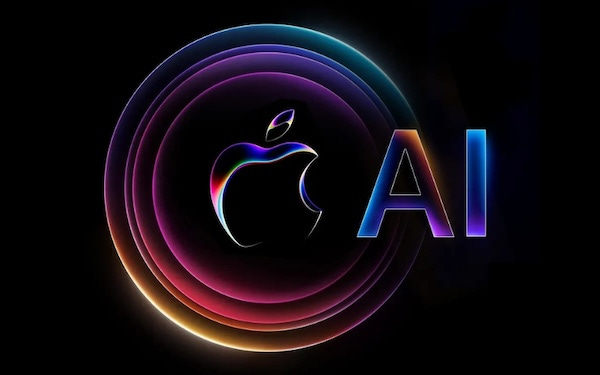Earlier this week, I talked about my conversation with a founder who was proudly deploying “an army of AI agents” across their startup. It was the kind of statement meant to signal ambition, but instead revealed a lack of strategy or foresight.
Across the industry, I’m seeing the same trend: companies rush headfirst into AI, hiring en masse, shouting breakthroughs, then cutting ambitious projects, and people, when reality sets in.
Amid this frenzy, Apple stands apart.

Steady Wins
From 2020 to 2022, Apple’s workforce grew by just under 20%, a slow and steady rise. Meanwhile, competitors like Alphabet, Meta, and Microsoft expanded by over 60% during the same timeframe. When layoffs hit in 2023 and 2024, those very companies slashed tens of thousands of roles: Meta by 21,000, Amazon by 27,000, Google by 12,000.
Apple, by contrast, announced no massive layoffs. Instead, they implemented thoughtful cost discipline - hiring freezes, reduced contractor spending, travel cuts—not people purge.
Apple’s Approach: Discipline Over Hype
Why am I drawing attention to Apple’s slow and quiet strategy? Because it exposes a truth few tech narratives allow: real strength lies in control and measured progress, not spectacle.
In mid-2024, Apple introduced “Apple Intelligence,” a suite of generative AI tools baked into iOS 18, iPadOS 18, and macOS Sequoia. These included on-device models for summarization, smart replies, and Siri enhancements. This was gradual, not splashy. It took two years of under-the-radar research, privacy investments, and infrastructure preparation. At WWDC 2025, Apple revealed its on-device foundation models would be accessible via a Foundation Models API, but the rollout was incremental, not a grandstand.
Contrast that with peers who chase headlines, toss AI onto every dashboard, and wonder why users don’t climb aboard.
Talent Moves Tell the Tale
Tracking AI talent departures also reveals something about Apple’s restraint. Reuters recently reported that Meta plucked several key Apple AI researchers, from Apple’s “Foundation Models” team, no less, to build its “Superintelligence Labs”. In June 2025, Bloomberg noted Apple’s top AI-lead, Ruoming Pang, also moved to Meta. These losses might look alarming, but Apple didn’t react with panic or mass replacement. Instead, they stay the course.
What Apple Offers: Calm Over Chaos
Letting agents loose without a clear strategy? That’s chaos.
Overhiring and only laying off people later? That’s poor cost discipline.
Dropping billions chasing every AI demo? That’s financial theater.
Apple’s game looks different:
They’re building slowly, deliberately.
They’re protecting trust, both brand and user confidence.
They choose durable progress over viral trends.
They have $162 billion in cash reserves, enough to absorb mistakes, land thoughtfully, and target real offense when ready.
In an industry glazed in hype cycles, that’s radical.
Lessons for AI Leaders
If you’re integrating AI agents, large language models, or automation into your business, here’s what Apple’s strategy reminds us:
Stability isn’t weakness; it’s strategic power
You don’t need to lay off a thousand people to show you mean business.Measured growth beats headlines
Let external milestones follow your internal readiness, not the other way around.Focused investment, not headline-seeking
AI should be part of a broader roadmap that includes data, infrastructure, and governance.Trust-based product development
You can’t afford missteps. Apple’s cautious rollouts reflect that minimizing harm is a feature, not insurance.
AI Strategy in 30 Minutes: A Manifesto for Discipline
I’ve built a tool to help leaders do what Apple does, except at the scale they might need.
AI Strategy in 30 Minutes is a crash-course PDF that gives you:
A sharp framework to define your AI moat
A way to scope use-cases without overhiring
A model to prioritize AI investment smartly
Metrics and feedback you’ll need to manage release cycles, not just launch cycles
It’s your strategic ally when everyone else is rushing into the next shiny object. Think of it as your disciplined playbook for thoughtful execution.
Final Take
Apple feels like the only grown-up in an ego-driven, hype-addicted AI room. Their approach isn’t flashy; it’s fundamentally smarter.
Your advantage isn’t in reacting faster. It’s in outlasting through discipline, reducing churn, and paying attention to outcomes, not optics.
Stability isn’t the absence of ambition. It’s ambition scaled sensibly.
If you’re racing to bolt AI onto your business, remember: your human-to-agent ratio isn’t just a metric. It’s your future.

